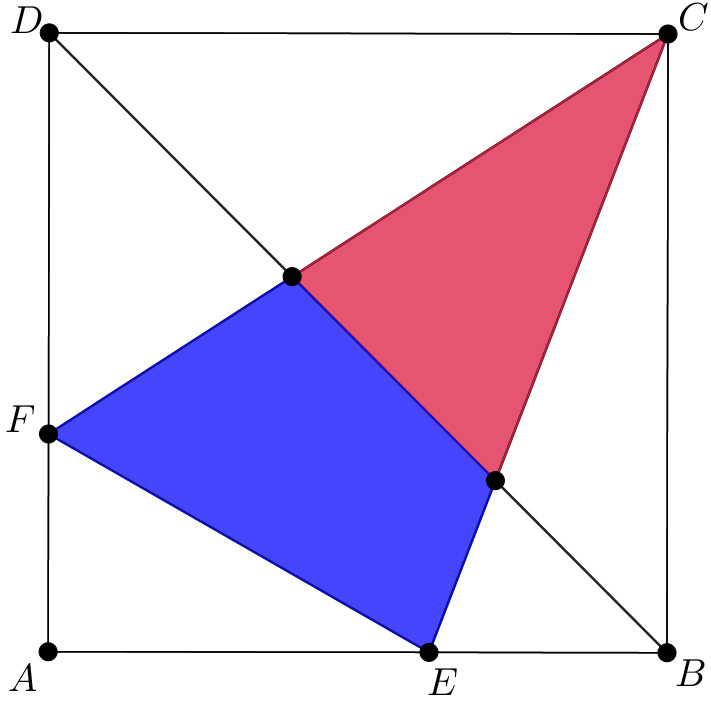Try it! Just a little geometry

is a square which has an area of . and are points on the square's sides as shown in the figure above. has a perimeter of . Diagonal divides into two pieces: a smaller triangle and a quadrilateral. Which has a larger area?
This section requires Javascript.
You are seeing this because something didn't load right. We suggest you, (a) try
refreshing the page, (b) enabling javascript if it is disabled on your browser and,
finally, (c)
loading the
non-javascript version of this page
. We're sorry about the hassle.
In the next figure the E and F points are P and Q . The square was rotated by 9 0 ° .
If A P = x and A Q = y then P B = 1 − x = P ′ B ′ , Q D = 1 − y = Q ′ D ′ and P Q = P ′ Q ′ = 2 − x − y . So P Q ′ = P B + B Q ′ = 1 − x + 1 − y = 2 − x − y . Since C Q = C Q ′ , the P C Q , P ′ C Q ′ , P C Q ′ triangles are congurent because they have the same sides. So P C Q ∠ = P C Q ′ ∠ = P ′ C Q ′ ∠ = α , and Q C D ∠ + P ′ C B ′ ∠ = 9 0 ° − α . Now we get D C B ′ ∠ = 1 8 0 ° = 3 ∗ α + ( 9 0 ° − α ) = 2 α + 9 0 ° . So α = 4 5 ° .
You can find the end of the solution here: Solution part 2